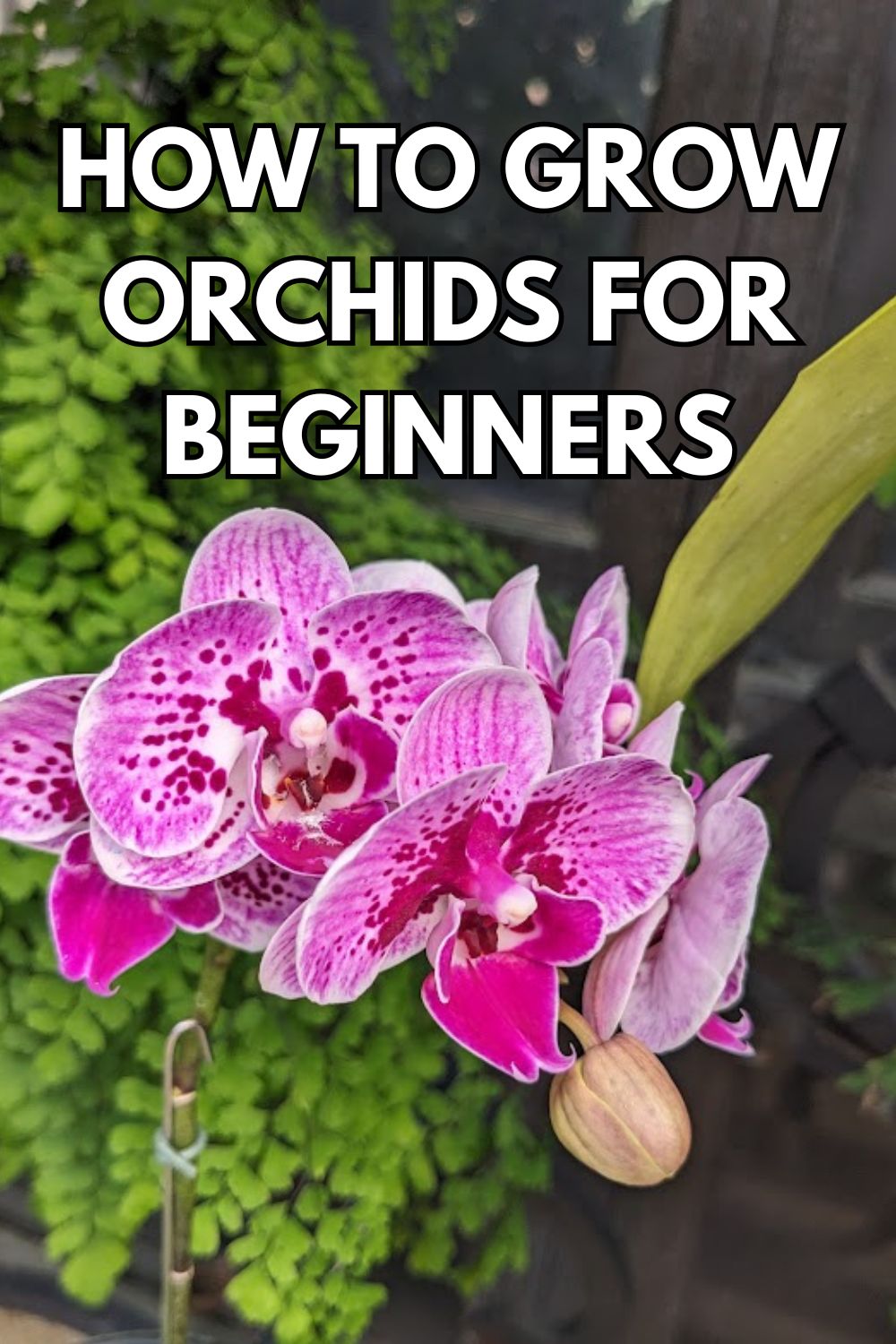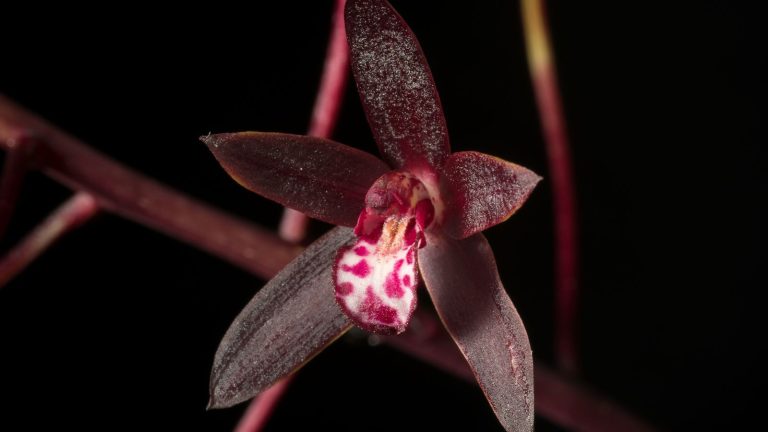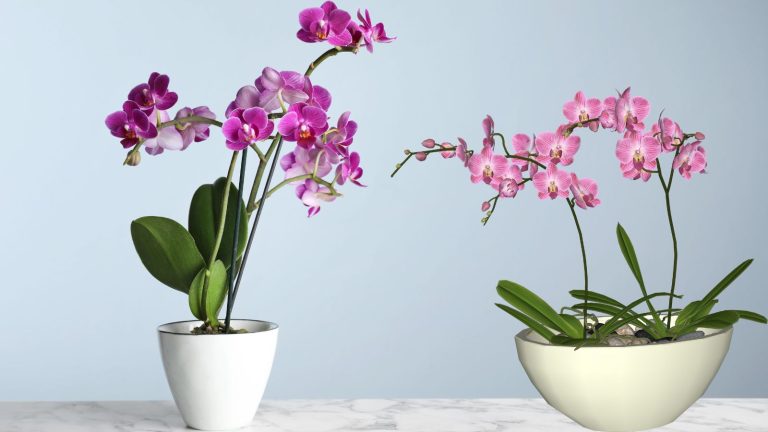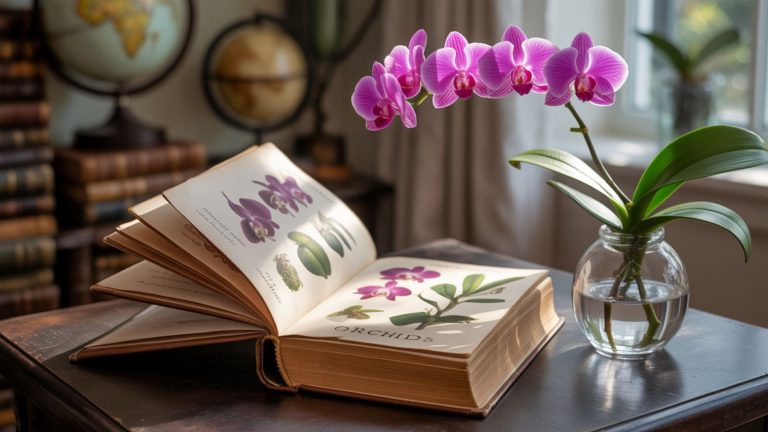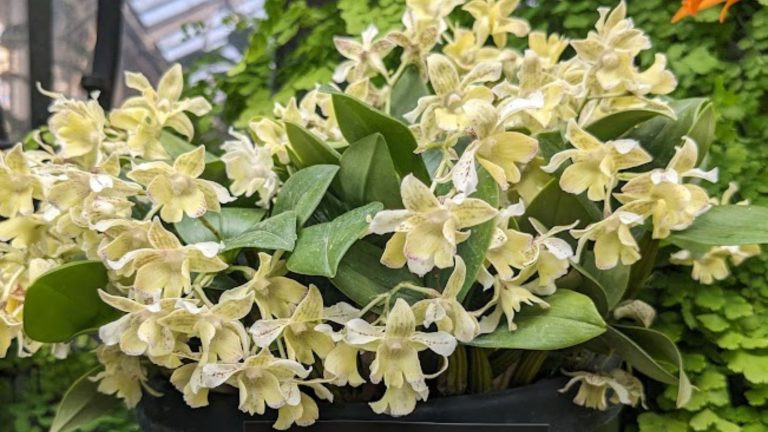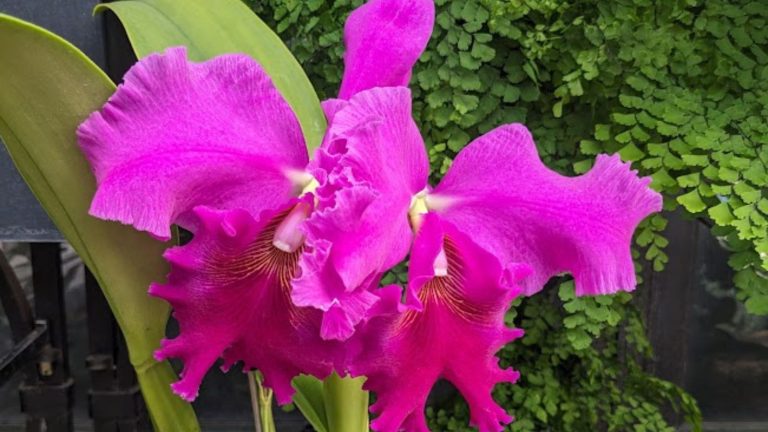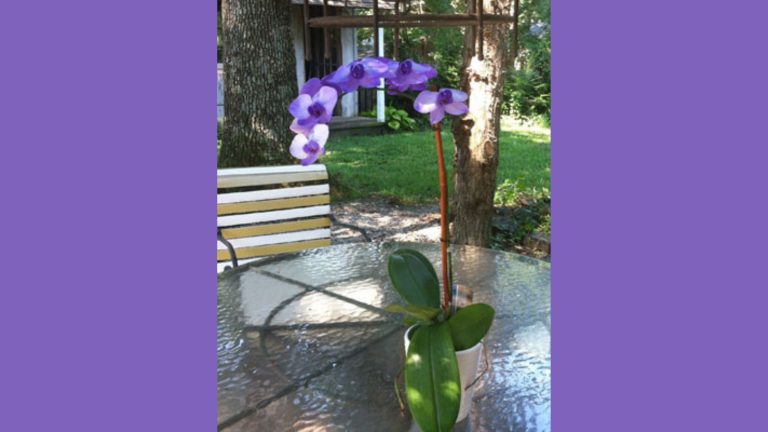How to Grow Orchids for Beginners
Growing orchids can be easy even for beginners. Once you learn about the advantages of orchids, you will see they are like any other houseplant. They need water, light, fertilizer, and, oh yes, you should talk to them or even play them some music.
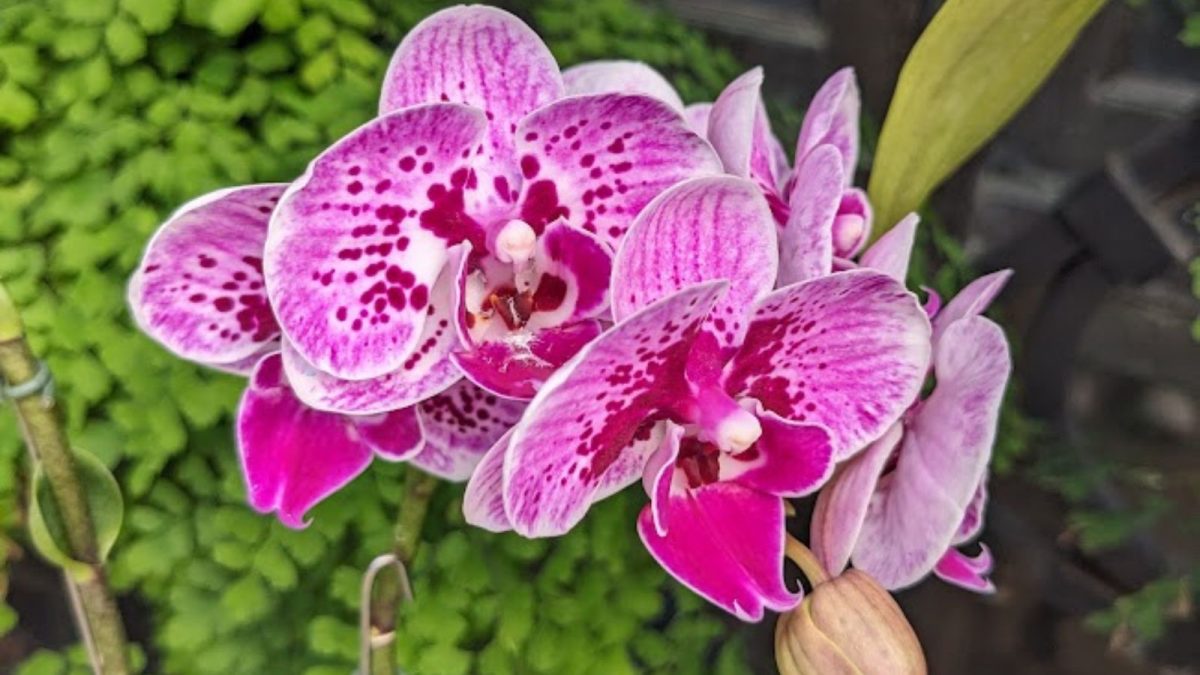
One of the long-standing myths that I still hear is that growing orchids as house plants is difficult and that orchids are finicky to grow. Well, plain and simple, the answer is NO. In fact, orchids as house plants are easy to grow and will continue to bloom for years. Some orchid plants have been around for centuries!
Below are some highlights you can use as a guide to growing orchids for beginners. As a beginner (and having a “beginner’s mind”, as they say, is wonderful!) You can learn a little about orchid anatomy.
The real trick in orchid care is to gain some experience and education and to be preventive about problems. It really doesn’t take much time or knowledge to keep orchids healthy.
I own about 20 hard orchid books and over 5 orchid e-books. I like different books for different reasons. I have enjoyed writing this book and sharing my many years of orchid growing knowledge. So stay tuned. This would be the book to start with right now, whether you are a new orchid grower or have some experience.
How to choose your first orchid
Choosing one for the first time can be daunting if you have never had an orchid. When you choose an orchid, it is important to pay attention to where you purchase it. It is important to be choosy when acquiring orchids from places that have large quantities of orchids. The high supply of orchids does not necessarily mean that they will be the best. On the contrary, it is better to purchase from known, reputable orchid growers rather than the cheaper big-box type stores.
If you are new to growing orchids and are ready to choose an orchid for your home, or perhaps you want to give an orchid as a gift for a special occasion like Valentine’s Day, Mother’s Day, or an anniversary, I suggest getting a Phalaenopsis: they are elegant, beautiful and the flowers last a long, long time.
Here are a few things you need to factor in while you decide what kind of orchid to choose.
- What kind of light can you supply for the orchid?
- What are the temperature ranges in your growing situation?
- Are the orchids that you want to grow or that you have able to survive and thrive in those temperatures?
- What is the humidity that you can provide in your growing situation?
- What kind of water do you have available?
- Will your orchids need purified water? Many do not require pure water but some do.
- Will you be able to grow some of your orchids outside or are you going to grow indoors?
- If growing indoors will you be growing under lights or using the natural light?
As you can see there are a few things to consider when choosing an orchid. You need to pick your orchid according to the environment that you can provide for your plants.
When you match the micro climate that your orchid came from (its home in the wild) to the environment of your home or growing situation your orchid will thrive. And if it thrives it will reward you by re-blooming. How great is that!
Check out these tips and get the best orchid for your home.
- Frequently Asked Questions about Orchids – Here are the questions I am most frequently asked by people new to orchid growing. These are really worth reading if you are new to orchids.
- High Supply of Orchids – As a buyer, here are a few things to be aware of when purchasing an orchid.
- Tips for Your Home Orchid – This article will give you some tips and perhaps help you avoid losing an orchid.
Here is a list of other essential factors to consider when learning to grow orchids.
Watering
One of the two top items for beginners growing orchids is water.
Orchid house plants and orchid plants generally need watering once a week. Remember, most orchids are air plants, meaning you will see their roots. Their root system and the pseudobulbs are very efficient in storing water.
Here is a watering guide you can use:
- Cattleya, Oncidium, and Dendrobium orchids like to dry out between waterings. An easy way to water is to put the plant in the sink and let water flow through it for about 20-30 seconds. Remember to let the water drain from the plant before putting it back into the decorative pot.
- Phalaenopsis orchids like to almost dry out between waterings. To decide on the next watering, stick your finger or a wooden pencil about an inch into the medium, which should feel spongy but not bone dry.
- Growing orchids like Paphiopedilum and Epidendrum should be slightly moist, so you should water theese twice a week.
Humidity
If the humidity in your home is low (below 40%), you may need to mist the plant occasionally or use a humidity tray. The tray is simply a metal or plastic tray filled with pebbles and filled with water halfway. The plant would sit on the pebbles. Be sure not to let the plant or roots sit in the water while on the tray.
Get an orchid humidity tray for a very easy way to handle humidity for your orchids! These trays just make orchid growing simpler, easier, and less stressful for you and your orchid plants.
I grow my orchids mostly indoors in Northern California and have over 20 of these trays in various sizes and shapes. They are one of my “favorite” orchid growing tools, and very well suited to growing orchids for beginners.
A humidity tray allows you to use posts with large drain holes without worrying about excess water pouring out and causing structural or furniture damage. The overflow will pass through the pot and collect in the tray, where the settled water will evaporate and help offset the loss of transpiration of moisture through the leaves.
You can display your orchids on various pieces of furniture and wood, and you do not have to mess with saucers or pebbles or worry about getting a “ring” from the pot on a favorite wood table or dresser.
This orchid humidity tray is designed for ease of use and minimal care. When the tray gets dirty, just empty the old water, wash the tray and grid with mild soap and water, and then refill with water. Your indoor plants will remain fresh and healthy. There are no stones to remove, no algae to scrub off, and no dirt to change. I love my orchid humidity trays. You and your orchids will love them, too!
The Right Lighting
Growing orchids requires the right light, which is the next most important element to growing orchid plants. Most orchid house plants do well in medium light. This would be in a window or an area that gets about four hours of sun or bright light a day.
Cattleya orchids do well in this light but can also do well in a sunlit area for up to six hours. Phals do well in indirect but bright light.
The best temperature
Most orchids do well in a typical house temperature. The low temperature at night does not impede the growth.
Here is a little guide you can use. Beginners growing orchids should understand that there needs to be fluctuation in temperatures in order for the plants to bloom. For example, there should be about 10 degree fluctuation for Cattleyas between the day and night temps.
Check this out if you have more orchid growing questions
And for those who would rather have a good old-fashioned paper book than an e-book I can heartily recommend this book called “Easy Orchids: Simple Secrets for Glorious Gardens – Indoors and Out” by Mimi Luebbermann. This book has fabulous photography by Faith Echtermeyer. I have owned this book since 1996 when it was published. I love it, and I think it is an excellent book for someone just getting interested in orchids.
